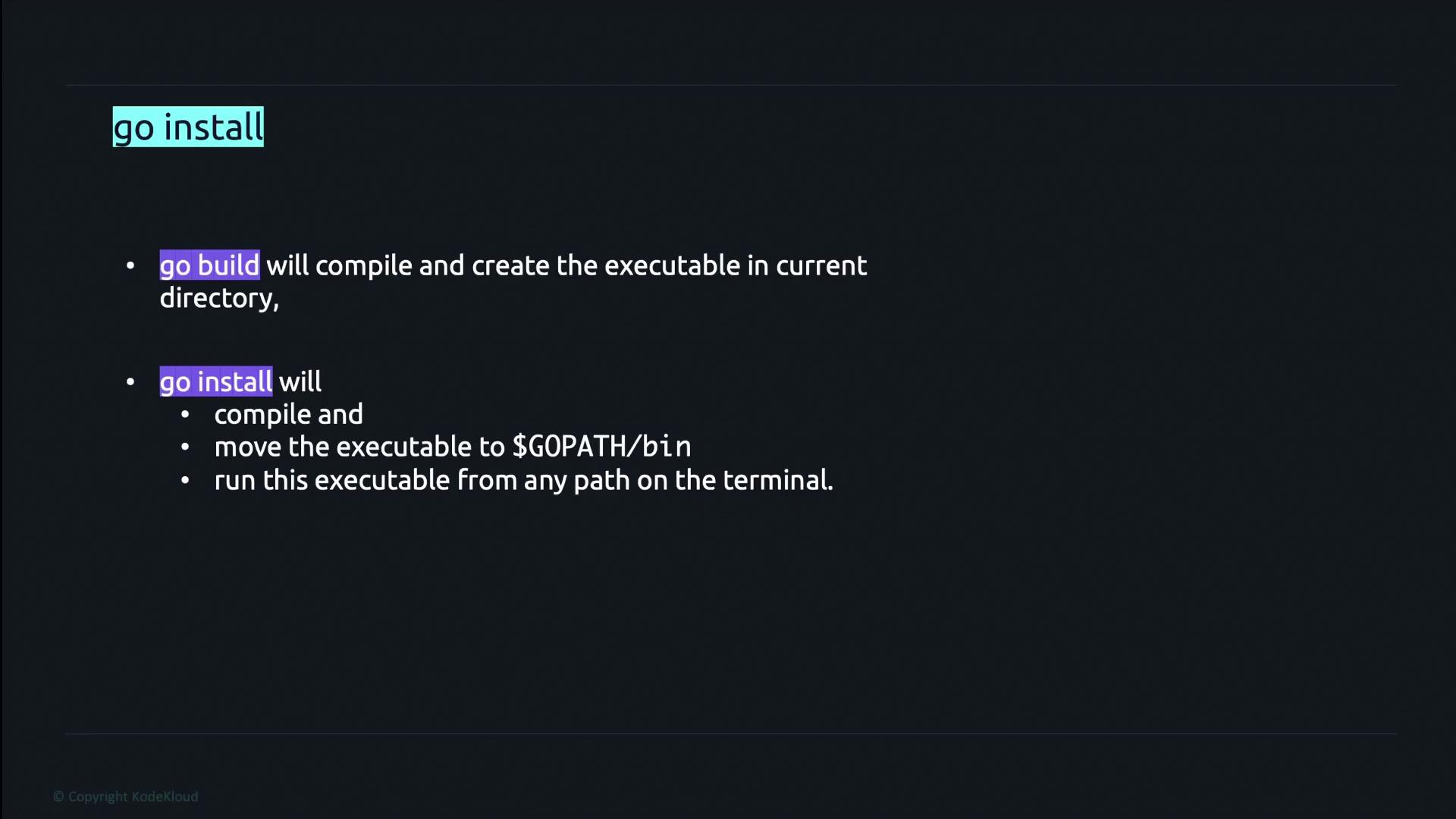Advanced Golang
Modules Packages and Imports
Golang commands
In this lesson, we explore some of the most commonly used Go commands. Each section outlines the purpose of a command and demonstrates how it integrates into your development workflow.
Initializing a New Module with go.mod
Use the go mod init command to create a new module. This command initializes a new go.mod file in the current directory, establishing the module's root. You can optionally provide a module path as an argument if needed.
go mod init
Tidying the Module with go.mod tidy
The go mod tidy command ensures that your go.mod file accurately reflects the dependencies used in your source code. It automatically adds any missing module requirements and removes those that are no longer relevant.
go mod tidy
Running Go Code with go run
The go run command facilitates quick testing of your Go code. It compiles and runs your program by creating an executable binary in a temporary location. Once the program completes execution, Go cleans up the temporary binary, similar to running a script in other languages.
go run <file>
Building and Installing Executables
go build
The go build command compiles the packages specified by the import paths along with their dependencies into an executable. The resulting binary is created in the current source directory.
go build
go install
The go install command compiles your code and installs the executable into the GOPATH/bin directory. This makes it accessible from any terminal session. To find your GOPATH, execute the following command:
go env GOPATH
Below is a diagram that illustrates the difference between go build and go install:

Managing Dependencies with go get
The go get command helps manage dependencies by resolving package arguments to specific module versions. It updates the go.mod file with the necessary versions and downloads the source code into the module cache. Use this command to add, upgrade, or downgrade a dependency.
go get example.com/pkg
go get example.com/[email protected]
Note
Keep your modules organized by regularly using go mod tidy after adding or updating dependencies to ensure that your go.mod file stays clean and up-to-date.
That concludes our walkthrough of essential Go commands. Happy coding, and see you in the next lesson!
Watch Video
Watch video content